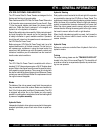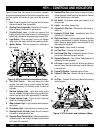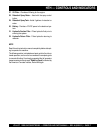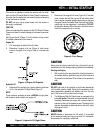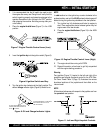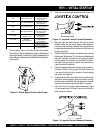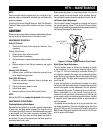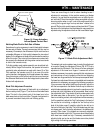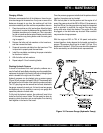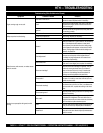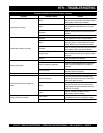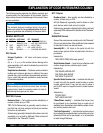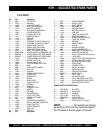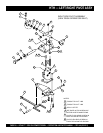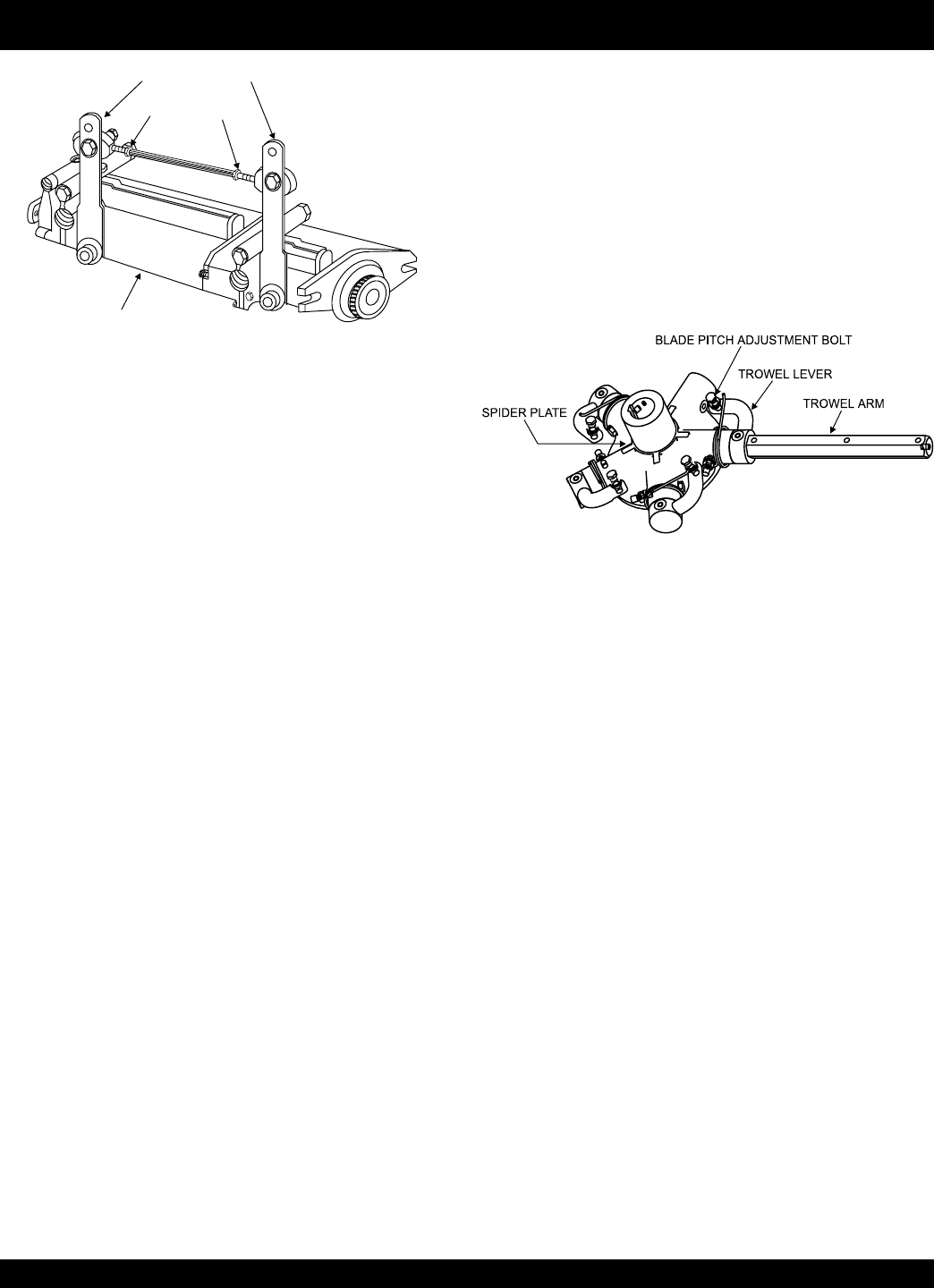
PAGE 22 — HTH-8 FT. RIDE-ON POWER TROWEL — OPERATION AND PARTS MANUAL — REV. #6 (02/22/11)
HTH — MAINTENANCE
Figure 16. Pump Actuation
Levers/Speed Control Rod
Figure 17. Blade Pitch Adjustment Bolt
PUMPACTUATIONLEVERS
ADJUSTMENT NUT
HYDRAULIC PUMP
Matching Blade Pitch for Both Sets of Blades
Sometimes it may be necessary to match blade pitch between
the two sets of blades. There are some signs that this may be
necessary. For example, the differences in pitch could cause a
noticeable difference in finish quality between the two sets of
blades. Or, the difference in blade pitch could make the machine
difficult to control. This is due to the surface area in contact with
the concrete (the blade set with the greater contact area tends
to stick to the concrete more).
To fix this problem, each spider assembly can be pitched indi-
vidually. With a Single Pitch machine, the operator is forced to
constantly make adjustments on each pitch tower. On a Twin
Pitch machine, the operator must lift up on one of the pitch
control handles, disengaging the linkage between the towers.
Once this is done, a pitch control crank can be turned to adjust
the difference. Make sure to lock the linkage back in place when
finished with adjustments.
Blade Pitch Adjustment Procedure
The maintenance adjustment of blade pitch is an adjustment
that is made by a bolt (Figure 17) on the arm of the trowel blade
finger. This bolt is the contact point of the trowel arm to the
lower wear plate on the thrust collar. The goal of adjustment is
to promote consistent blade pitch and finishing quality.
There are some things to look for when checking to see if
adjustment is necessary. Is the machine wearing out blades
unevenly (i.e. one blade is completely worn out while the oth-
ers look new)? Does the machine have a perceptible rolling or
bouncing motion when in use? Look at the machine while it is
running, do the guard rings “rock up and down” relative to the
ground? Do the pitch control towers rock back and forth? These
are some of the indications that the blade pitch may need to be
adjusted using the adjustment bolts on the trowel blade finger.
The easiest and most consistent way to make this adjustment
is to use the Trowel Arm Adjustment Fixture (P.N. 9177) that is
manufactured by Whiteman. This fixture will allow consistent
adjustment of the trowel arm fingers. It comes with all the
hardware necessary to properly accomplish this maintenance
and instructions on how to properly utilize this tool. Adjusting
the trowel arm fingers without a fixture requires a special talent.
If a trowel arm adjustment fixture is not available and immediate
adjustment is necessary; we suggest the following procedure.
If you can see or feel which blade is pulling harder, adjust the
bolt that corresponds to that blade. Another way to determine
which blades need adjustment is to place the machine on a flat
surface and pitch the blades as flat as possible. Now, look at
the adjustment bolts. They should all barely make contact with
the lower wear plate on the spider. If you can see that one of
them is not making contact; some adjustment will be necessary.
It will be possible to adjust the “high” bolts down to the level of
the one that is not touching, or adjust the “low” bolt up to the
level of the higher ones. If possible, adjust the low bolt up to
the level of the rest of the bolts. This is the fastest way, but may
not always work. Verify that after adjustment, the blades pitch
correctly. Often times, if the blades are incorrectly adjusted,
they will not be able to pitch flat. This occurs when the adjusting
bolts have been raised too high. Conversely, sometimes the
adjusting bolts are too low and the blades cannot be pitched
high enough for finishing operations.




